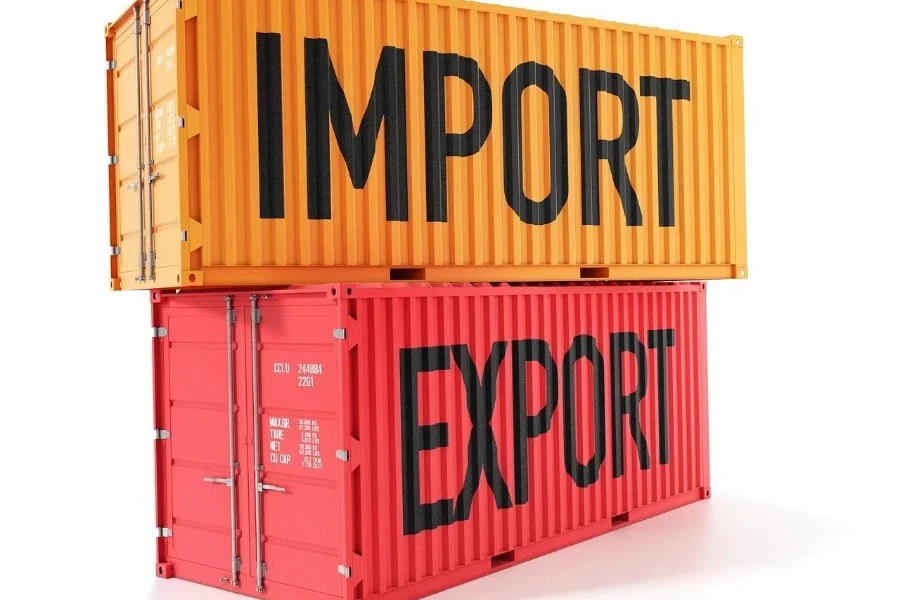From standard global language to universal network protocol, the world constantly evolves to find common ground amid differences for faster, easier, and more efficient information exchange. The availability of various standardized methods and systems also proves that such constant evolution extends not only to our daily interactions, but also to the way different computer systems and platforms communicate.
In the same vein, Electronic Data Interchange (EDI) is indeed one such critical example that enables diverse systems on different company networks to seamlessly and automatically communicate with each other. Read on to learn more about what EDI is all about, the key features of EDI, how EDI works, and its key applications.
Table of Contents
Understanding EDI
Core functionalities and components of EDI
How EDI works
Key EDI applications in supply chain management
Seamless standardization
Understanding EDI

What is EDI
Electronic Data Interchange is a computerized method that allows for direct and automated exchange of business documents between two trading partners based on a standardized format. By using EDI, virtually all types of traditionally printed documents can be exchanged efficiently in a streamlined manner, eliminating the relatively slow and error-prone manual processing.
Benefits of EDI
Overall, the implementation of EDI brings tremendous value and efficiency to both trading partners, which can be categorized into the following three main aspects:
A) Costing and productivity benefits
By automating the exchange of critical business documents, EDI significantly improves production costs and time efficiencies. The processing speed is significantly improved, saving both time and money that would have otherwise gone towards extra labor and production costs. One of the most obvious areas of savings comes from reducing the traditional expenses tied to paper-based documents, like sorting, distributing, storing, and organizing them.
B) Operational and security benefits

Since implementing EDI reduces manual data entry tasks for related documents, it greatly decreases the potential for human error or accuracy issues, significantly boosting operational efficiency. As a result of improved operations with fewer potential errors, business relationships between trade partners can also be strengthened. With a streamlined process that enables faster transactions and more reliable, consistent services, this in turn also leads to a more positive client experience. As everything is conducted electronically and in compliance with established industry standards and protocols, the security and integrity of the document exchange process are also highly safeguarded.
C) Accountability and reporting benefits
The conversion of documents into electronic formats also reflects the transparency and traceability of all transactions. This greatly improves accountability for all parties involved while also simplifying reporting processes. Another noteworthy impact of increased accountability is the substantial reduction in the use of paper documents, which enhances the environmental responsibility of business partners in promoting sustainability.
Core functionalities and components of EDI
In order to facilitate the smooth exchange of business documents, EDI must incorporate the following core features and components:
Standardization and governance

Just like how one common language is used for two people to communicate, a common format is essential for two companies to exchange documents electronically, especially for those in different industries using different systems. For this reason, various EDI standards are available to accommodate specific needs and regulations. Nevertheless, globally, two dominant EDI standards exist. The ANSI X12 standard primarily serves the North American market, while the EDIFACT standard, recommended by the UN, is used mainly by European businesses. These standards regulate the structure of the documents to ensure seamless communication and compliance with various region-specific regulations.
Translation and automation
While EDI standardization is essential for enabling the exchange process, documents must first be translated into compatible standardized EDI formats. This is where translator software plays a crucial role. These programs match and align relevant fields such as names, addresses, and part numbers, ensuring both systems can communicate seamlessly. The best part is that thanks to translation and mapping software, much of this process is automated, speeding up transactions for a smoother exchange.
Batch processing and message routing
Batch processing software in EDI is crucial for the high-efficiency transmission of large volumes of transactions, enabling the sending and receiving of multiple documents at once. This capability is particularly beneficial for high-transaction fields like supply chains and logistics, saving time and acting as an essential feature in enterprise-level EDI solutions.
Meanwhile, message routing software ensures that transactions are correctly sorted and delivered to their intended recipients in the proper format. Essentially, batch processing wraps and unwraps documents into smaller divisions, enabling large-scale transactions, while message routing directs them to the appropriate addresses.
Security and compliance

Security and compliance are critical components of EDI. Secure internet protocols such as Secure File Transfer Protocol (SFTP), Simple Object Access Protocol (SOAP), and AS2 ensure safe document transmission. These protocols play a vital role in safeguarding the integrity and confidentiality of the data exchanged between organizations. Meanwhile, standardized electronic transmission, rather than paper or fax, helps ensure compliance with industry regulations by minimizing errors and enabling accurate, timely data reporting.
How EDI works

The EDI process typically involves the following steps, which include both the operational workflow and the relevant technical and network-focused aspects:
Electronic Data Interchange (EDI) helps businesses swap key documents, such as invoices or purchase orders, with ease by first, creating the documents within the company and pulling the relevant data from their internal systems. These documents need to be turned into digital formats, making them ready for electronic transfer.
Next, the digital documents are standardized into formats like EDIFACT or ANSI X12 so that all parties involved can read them. Software tools are used for this transformation, ensuring the information is ready for transmission.

Once standardized, the documents are sent to trading partners through secure methods—this could be file transfers, web-based systems, or networks that offer extra services like audits. When the other company receives the documents, they’re translated back into formats compatible with their systems.
The documents are then ready to be processed, which typically involves updating relevant databases or triggering a specific action. For instance, in the case of a purchase order document, this step might involve automatically updating inventory levels, generating a work order, or scheduling delivery. Finally, once everything is processed, the receiving company sends back a confirmation, acknowledging that everything was delivered and understood properly.
Key EDI applications in supply chain management

EDI can be perceived as the invisible helper that keeps supply chains moving. When a shipper works with a carrier, EDI takes care of sending all the shipping instructions digitally. Everything from delivery addresses to shipment details is transmitted in real-time. The carrier can then send updates back without anyone needing to manually input data, saving tons of time and avoiding errors.
Now imagine a freight forwarder working with a customs broker. They need to deal with a ton of paperwork, but with EDI, it’s all done electronically. Bills of lading, customs declarations—everything is sent smoothly to customs authorities, cutting down on delays and mistakes. For instance, Importer Security Filing (ISF) is commonly filed via EDI to transmit required data to the CBP. In fact, the CBP encourages the use of EDI for many import/export-related filings to enable faster data processing and reduce potential delays.

Retailers also use EDI to stay on top of inventory. They send orders directly to their distribution centers, and the centers respond with shipment notices that let the retailer know exactly when to expect deliveries. This helps keep everything in sync, preventing stock shortages or delays.
Finally, third-party logistics providers (3PL) and carriers use EDI to keep track of shipments and stay on schedule. It’s especially important for companies using just-in-time (JIT) production, where timing is everything. EDI makes sure that communication between suppliers, carriers, and manufacturers happens fast, so everything stays aligned with customer demand.
Seamless standardization

Electronic Data Interchange is the computer-to-computer, or more precisely, system-to-system direct exchange of business documents in a standardized format between two commercial entities. By enabling faster processing and greatly reducing the potential for human error and data inaccuracies, EDI contributes to significant cost and time savings, while at the same time also enhancing overall productivity and operational efficiency. On top of that, it promotes greater accountability through its increased visibility and transparency across all transactions.
The standard implementation of EDI begins with the creation of documents in electronic format, followed by their translation into a synchronized standard before transmission to the receiving party. Upon receipt, the recipient provides the relevant receipt, sends back the similarly translated data, and acknowledges that the process is successfully completed.
From transactions between shippers and carriers to collaboration between freight forwarders and customs brokers, as well as the seamless standardization and exchange of information between retailers and distribution centers, EDI is pivotal in enhancing automation, reducing errors, enabling integration with supply chain management systems, and supporting time-sensitive operations such as just-in-time production. This highly demonstrates its versatile applications across diverse supply chain management sectors.
Looking for expert knowledge on logistics strategies and wholesale business sourcing ideas? Explore Alibaba.com Reads today to get the latest business insights and wholesale strategies. Check back here regularly for fresh content and timely updates!



